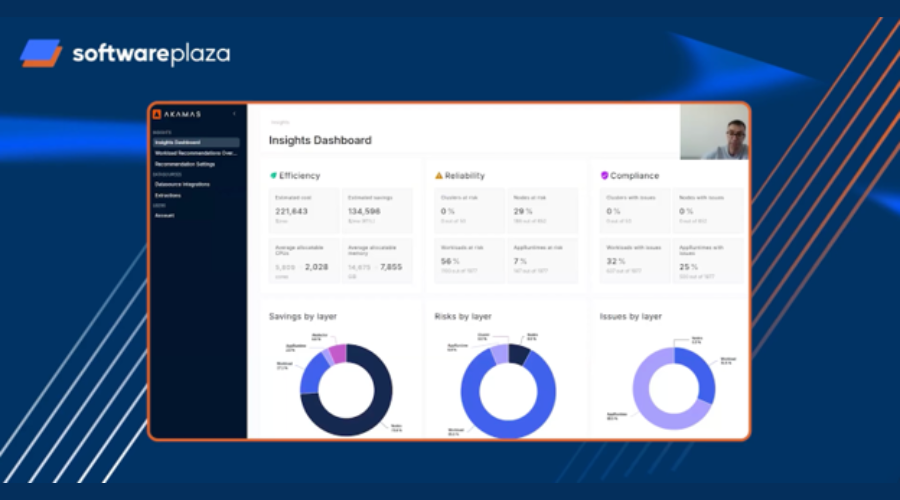Agentic AI is one of the most exciting trends in artificial intelligence. By enabling systems to act autonomously, interpret natural language, reason about tasks, and coordinate workflows, agentic AI lets you unlock capabilities that previously required teams of developers. But scaling such systems isn’t as simple as plugging in a large language model (LLM). Cost, reliability, and developer experience become bottlenecks quickly.
That’s where Akka.io, formerly Lightbend, comes in. With a history in concurrent systems and actor-based architectures, Akka has become a full-stack development platform for building scalable agentic services. In a recent Software Plaza podcast episode, Tyler Joel, CEO of Akka, shared insights on how to build and scale agentic systems using the company’s platform, emerging design patterns, and the vision of autonomous AI.
The Akka story: from concurrency to autonomy
Akka’s story starts in 2009 when Jonas Bonér founded Lightbend to solve one of the hardest problems in computing: concurrency. Multi-core CPUs were becoming the norm, but programming languages lacked efficient abstractions for parallelism. Inspired by a 1970s computer science model, Bonér introduced the concept of actors, lightweight entities that communicate asynchronously. This actor model allowed developers to build concurrent, distributed applications without wrestling with threads and locks.
Over the years, Akka became a widely adopted open-source framework, powering high-performance systems in finance, telecom, and IoT.
Why agentic AI
Traditional AI applications have static models embedded in workflows. Agentic AI flips this model. Instead of rigid pipelines, organizations deploy autonomous agents that can reason, adapt, and interact with humans or other systems using natural language. According to Joel, enterprises are adopting agentic AI through a few different models.
Some centralize the effort under chief AI or chief data officers who drive strategic initiatives across the organization. Others focus on CIO-led innovation mandates that bring agentic capabilities into existing IT systems. And then there’s the more distributed approach sometimes called “shadow agentic,” where every employee is encouraged to adopt agents for their own productivity. Each of these paths shows how far organizations are going with this new class of AI.
It’s clear why a marketing team can prototype customer-facing chatbots without writing code. A logistics company can deploy agents to optimize routing in real-time. A healthcare provider can integrate agents into edge devices that analyze patient data streams. But as Joel pointed out, turning these experiments into production systems requires overcoming big hurdles.
The core challenges of agentic systems
Building scalable agentic systems is not as simple as connecting an LLM to an API. Organizations face several systemic challenges. LLMs-powered agents are still uncertain, hallucinate or drift, so predictability is hard. And costs can add up fast: high-volume deployments can run up token bills in the hundreds of millions a year.
Developer experience adds another layer of complexity since coordinating multiple agents requires orchestration, memory, and streaming capabilities that are not trivial to implement. And don’t forget reliability and safety. When agents act autonomously, failures or malicious inputs can propagate through systems with big consequences, so monitoring and governance are essential.
Emerging design patterns in agent orchestration
As organizations start to experiment with agentic AI, certain patterns are starting to emerge. Some systems use multiple agents in parallel and then converge on an answer through consensus, which is more reliable than relying on a single model. Others focus on document processing, where large inputs are broken down into chunks, distributed across specialized agents, and then recombined into a coherent answer.
More complex scenarios involve hierarchical setups, with supervisory agents coordinating specialized sub-agents in ways that resemble enterprise organizational charts. Early designs are also experimenting with feedback loops where agents critique and refine each other’s outputs, laying the groundwork for self-improving systems.
Akka.io incorporates these design patterns into its orchestration layer, providing developers with production-ready building blocks rather than requiring them to reinvent coordination logic from scratch.
Akka.io’s platform approach
Akka.io is not just a toolkit; it’s a full-stack platform for building, deploying, and running agentic services. At its core is an orchestration engine for managing long-running processes and workflows across distributed agents. It also includes an integrated development platform with abstractions that make agent creation and management easy, and memory that combines short-term context and long-term persistence so agents can adapt over time.
One of the standout advantages is efficiency. Akka’s execution engine achieves dramatically higher density than Python-based implementations—up to 80% more efficient. This translates directly into cost savings, reducing the massive infrastructure and token overhead that can otherwise slow down enterprise adoption.
Akka in real-world use cases
Akka’s strengths are best shown in live deployments across industries. Customer service providers are building conversational systems that respond to queries and personalize in real time, improving satisfaction and reducing support costs. In consumer apps, Tuby and Swiggy use agentic AI to adapt recommendations and content in real time, to create super-personal experiences.
In high-speed environments, automotive systems use Akka at the edge to process telemetry data to make decisions without cloud latency. Medical device manufacturers deploy agents that analyze patient sensor readings locally to respond in time and comply with regulations.
Self-improving autonomous AI
Joel envisions agentic systems that are not static deployments but self-improving ecosystems. Instead of periodic human updates, these systems will have feedback loops that monitor outcomes and refine strategies. Micro reinforcement learning cycles will allow agents to learn incrementally, embed small but consistent learning into daily operations. Learn more about what it means to build intelligent software in the age of agentic AI during the webinar.






